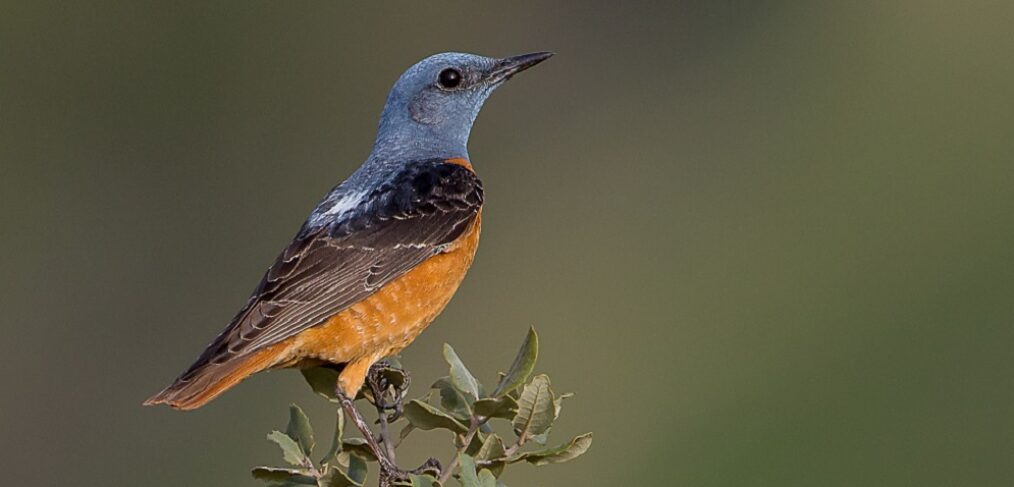
Species of the week #112- Common Rock Trush
The starling-sized Rock Thrush is the mysterious invisible one among songbirds. Despite its striking plumage, it is hardly noticed when it sits completely motionless on a rock. And on its long autumn flight to areas south of the Sahara, it flies exclusively secretly, at night.
| Distribution Status in Germany | Threatened with extinction, only two breeding pairs in Germany |
| Remaing occurances | Alps, Spain |
| Last sighting in Germany | 2016 |
| Habitat | Rock steppe, mountains |
| Threat | Disturbance, destruction of breeding sites, afforestation, scrub encroachment, |
The very shy Common Rock Thrush is a resident of the Bavarian Alps and feeds on insects and berries. Common Rock-Thrushes like sunny places with shady areas and short vegetation. Outside the mountains they prefer quarries, old vineyards or ruins. The nest is built in rock crevices, caves or wall niches. It can be up to seven metres high, but some pairs also build on the ground. The entrance to the nest, which consists of an outwardly tangled pile of stalks with a neatly carved nest hollow, is usually hidden behind a bush. Up to six eggs are hatched, the young leaving the nest after only two weeks.
The only time when you can observe the rock thrush better is during the courtship phase. Then the male flies up with fanned tail fluttering like a lark. At the highest point, he may stand in the air for a few moments, drops down singing for a long time and rises again. The males do this for many hours until they find a female.
The male is strikingly rusty-red on the belly, the wings are brown, the head is blue-grey feathered. The female is more inconspicuous brown and beige banded. The tail, like the male, is rust red. A typical feature of this species is the white dorsal patch, which can be seen when it flies up.
A good 200 years ago, the Rock Thrush was found not only in the Alps but also in the Harz Mountains. Since the early 20th century, however, they had become completely extinct in Germany. In the Bavarian Alps, one breeding record was found in 1953 and one in 1983. In 2008, four singing males were recorded in the Allgäu. The last survey took place in 2016. Two breeding pairs were found in the Bavarian Alps. Fortunately, the Rock Thrush is not endangered throughout Europe, mainly due to stable populations in Spain and Switzerland.
Politically necessary:
- Visitor control
- Reduction of tourist use in breeding areas
- Promotion of traditional alpine pasture use
Click here for more exciting species of the week
Photo : By Pierre Dalous – Own work, CC BY-SA 3.0, https://commons.wikimedia.org/w/index.php?curid=29067133
Translated with www.DeepL.com/Translator (free version)
